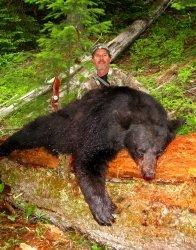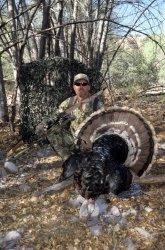Going Traditional
Some bowhunters choose traditional archery to emulate icons like Fred Bear, while others might just be looking for something simpler. Some in the archery industry see this as a threat somehow. I guess the assumption is an onslaught of single-string shooters will result in fewer purchases of expensive gizmos. Traditional archery is pretty basic.
I regularly find it necessary to point out that traditional bow use doesn't discount compound use. Traditional archery is just another facet of archery enjoyment. Many shoot recurves or longbows for small game, bowfishing or stump shooting, and then take up compounds when serious big-game seasons arrive. There's nothing wrong with that. You're not required to declare an allegiance - though some Pollyanna traditionalists might have it that way.
Traditional archery is experiencing a renaissance. For instance, Bear Archery has brought back many of the old classics and introduced new models, making them better, prettier and sometimes more affordable. The Hoyt take-down recurves have continued to sell briskly. Martin Archery, in the traditional dodge some 50-plus years, is taking more traditional orders than ever. Traditional archery is hip once again.
If you've been considering a traditional bow, you're in luck. I'm here to save you some beginning frustrations. First and formost, the biggest difference between traditional and compound bows, of course, is the former's lack of let-off. Even if you easily draw 70-pound compounds, rest assured any traditional bow pulling more than 50 to 55 pounds (depending on draw length) proves a huge mistake. The weight stated is at 28 
Too, match overall bow length to draw length. In general terms, if your draw length is between 26 and 27 inches a 56- to 58-inch recurve allows maximum energy loading in the shorter limbs. If pulling from 28 to 29 inches, a 60-inch bow is ideal; from 30 inches and beyond a 62- to 64-inch recurve provides added smoothness and eliminates painful finger pinch for maximum accuracy.
Finally, the other big difference between traditional and compound bows is with compounds you tune bow to arrow. In traditional archery, you mostly tune arrow to bow. With wooden or aluminum arrows, this is easy - consult a spine chart. With carbon, it's a bit trickier, generally starting with the lowest deflections (.500- or .400-inch) - paired with 125- to 145-grain points - and paper tuning until you find a shaft that not only flies true, but centers where your hand/eye wants the arrow to impact.
Shooting traditional bows requires more practice and dedication. But that's all part of the fun, as you'll never truly master such bows, keeping you coming back for more and making success that much more rewarding.







